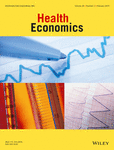When health insurance reforms involve non-linear price schedules tied to payment periods (for example, fees levied by quarter or year), the empirical analysis of its effects has to take the within-period time structure of incentives into account. The analysis is further complicated when demand data are obtained from a survey in which the reporting period does not coincide with the payment period. We illustrate these issues using as an example a health care reform in Germany that imposed a per-quarter fee of €10 for doctor visits and additionally set an out-of-pocket maximum. This co-payment structure results in an effective 'spot' price for a doctor visit that decreases over time within each payment period. Taking this variation into account, we find a substantial reform effect-especially so for young adults. Overall, the number of doctor visits decreased by around 9% in the young population. The probability of visiting a physician in any given quarter decreased by around 4 to 8 percentage points.
Paper: https://doi.org/10.1002/hec.2955
Altmetric: https://www.altmetric.com/details/1561515
